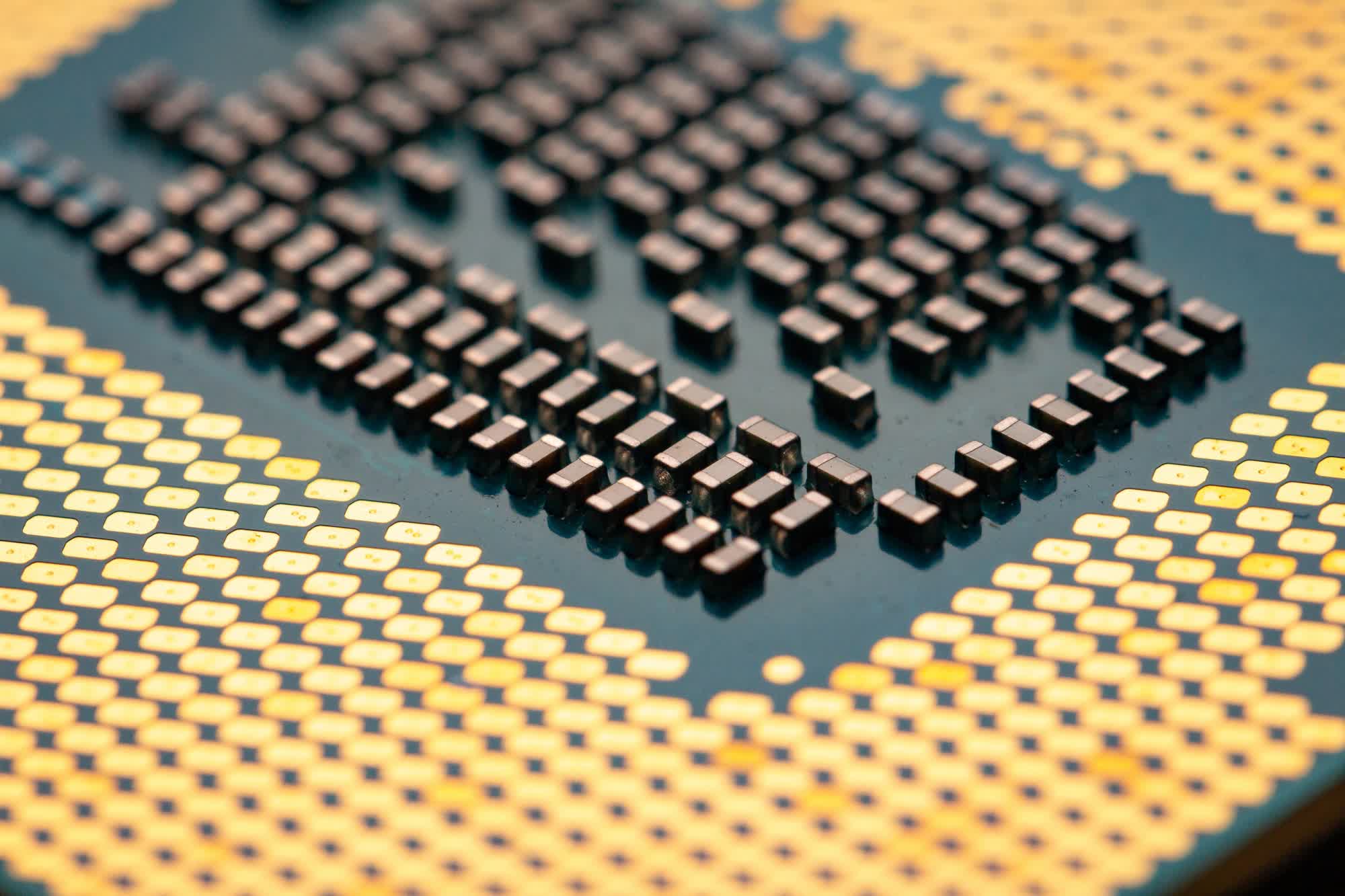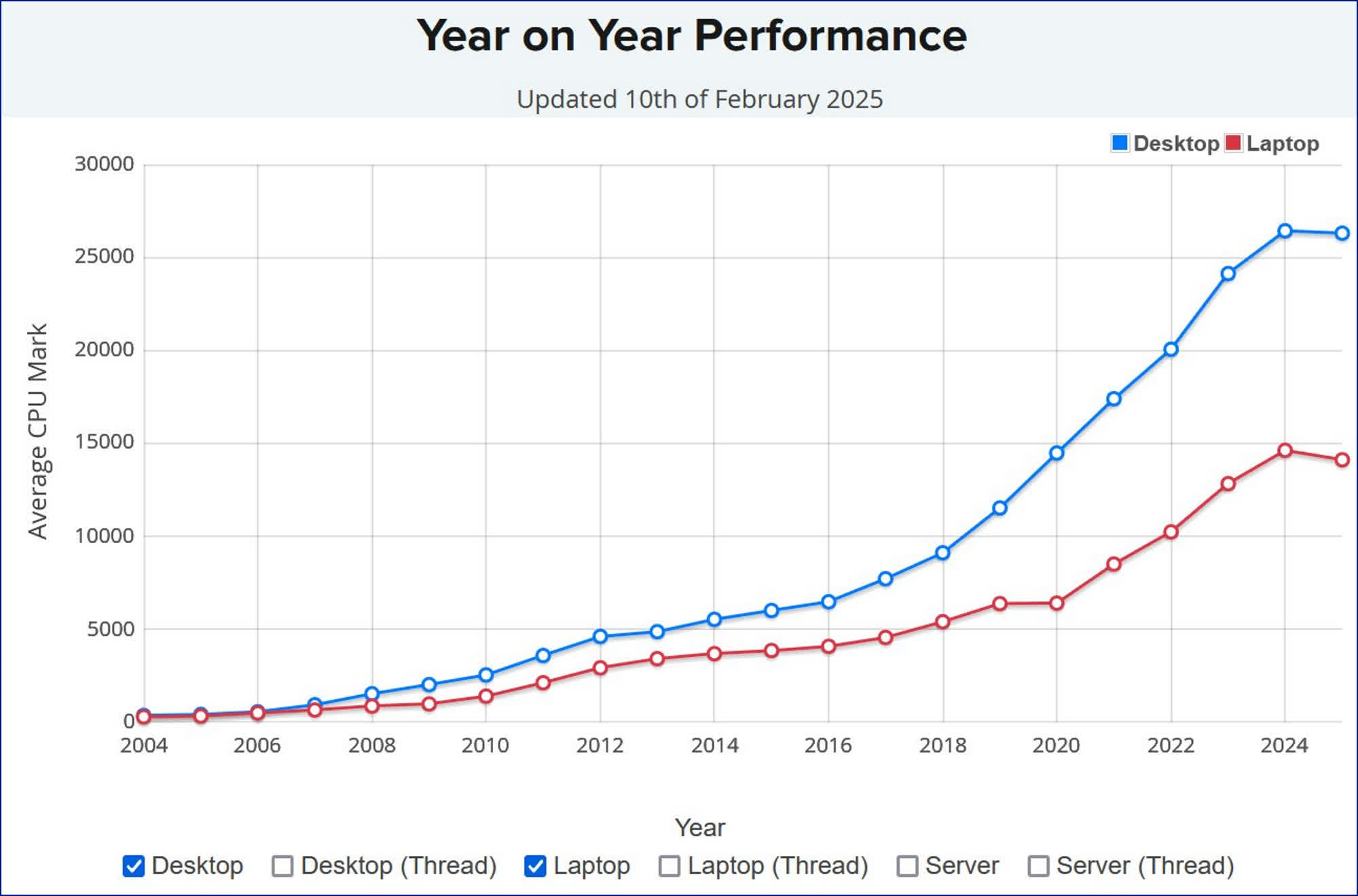TL;DR: PassMark has been aggregating CPU performance data for nearly two decades based on collective scores recorded through its benchmarking software. For the first time in 20 years, however, the data now shows an unexpected decline, shedding light on a potentially concerning trend in CPU performance.

PassMark Software has been developing well-regarded PC benchmarking and diagnostic tools since 1998. The company's website hosts a page that compiles performance scores submitted by users, and right now, the CPU scores are trending downward.
The first graph on PassMark's Year on Year Performance page compiles "thousands" of PerformanceTest benchmark results and is updated every two weeks, according to the company. The chart includes data from PerformanceTest versions 5 through 11, with version 8 (released in 2012) being the first to collect single-thread performance data.
Over the first two months of 2025, PassMark reports an unexpected decline in average CPU performance. For the first time since the company began collecting PerformanceTest results in 2004, newer CPU models show no clear trend of increasing performance. This slowdown appears consistent across both desktop and laptop processors and applies exclusively to the Windows platform.
In 2024, PassMark's data showed that users tested 186,053 desktop CPUs and 101,316 laptop CPUs, with average performance increasing by 9.5% and 13.9%, respectively.
So far in 2025, 47,810 desktop processors and 25,541 laptop processors have been tested, revealing a 0.5% decline in desktop CPU performance and a 3.4% drop in laptop CPU performance. PassMark began including Arm processors alongside x86 models in 2021.
What's behind this sudden slowdown in performance growth? PassMark offers no definitive explanation for this "historical" phenomenon – at least not yet. The company speculates that users may be opting for cheaper or less power-hungry hardware, or that system bloatware is hindering performance. Windows 11 adoption could also be a factor, although the performance difference between Windows 10 and 11 is generally considered marginal.
The simplest explanation, however, is also the most troubling: modern AMD and Intel CPUs may have hit a performance plateau. AMD's Ryzen Threadripper Pro 7995WX, released in 2023, drove a massive 58.6% increase in desktop CPU performance. But in 2024, newer processors delivered only incremental gains at best.
PassMark records first-ever decline in CPU performance after 20 years of growth
